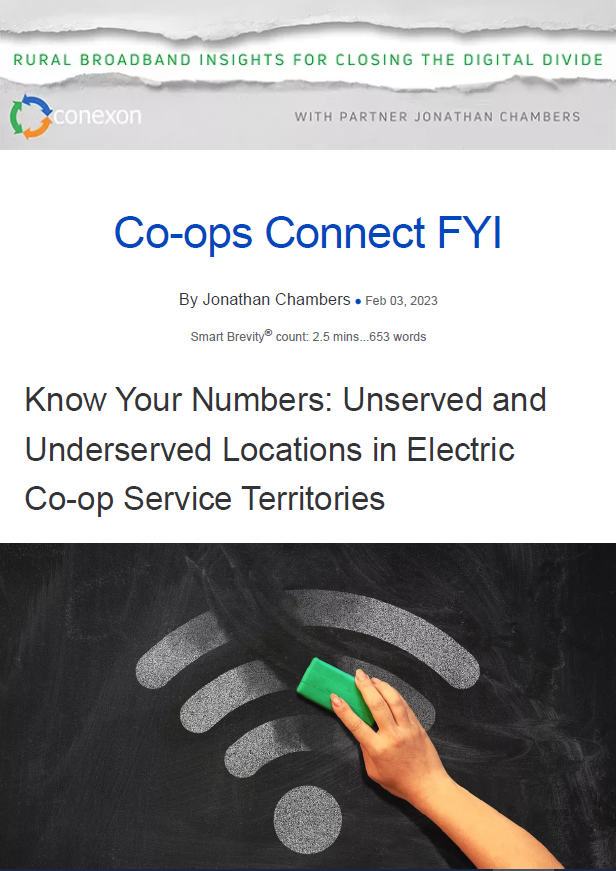Know Your Numbers: Unserved and Underserved Locations in Electric Co-op Service Territories
February 3, 2023
Over the past couple of months, Mike Byrne and I have been reviewing and sorting the figures from the new National Broadband Map (NBM). When we were at the FCC, Mike created the first NBM (not the data, but the map), and we’ve been involved in multiple iterations ever since.
I will share some of the data and our observations here in the coming weeks.
What I’ll share is based on the first version that was published at the end of the year.
- While the FCC processed challenges to the location fabric and collected challenges to the service availability claims of ISPs, neither of those issues is yet relevant.
- The FCC will use the revised data fabric in the next broadband data collection (collected by March 1)
- An updated map will likely be issued in June.
The big picture:
The service availability challenge will not be reflected in the maps until the end of the year, if then.
Top Line Numbers
The FCC counts over 112 million Broadband Serviceable Locations (BSLs), which are structures that the FCC considers could be served by broadband.
- As I have written previously, the FCC does not count as BSLs housing units, most businesses, schools, libraries, government buildings, anchor institutions, churches, agriculture, trailer parks, or many locations that would normally count in rural America.
- It counts structures in a manner that has no correlation to the Census, nor any peer review. So, there’s that.
- Of the 112 million BSLs, over 6 million lack any wireline or licensed fixed wireless provider reporting availability of 25/3 Mbps and are considered unserved.
- An additional 6 million lack any wireline or licensed fixed wireless provider reporting availability of 100/20 Mbps and are considered underserved.
The allocation of $42.5 billion from the BEAD program is a state’s percentage of unserved locations only, while all underserved locations are eligible for funding.
By our calculations:
- Of the 6 million unserved BSLs, 3 million are located in 767 electric co-op service territories.
- Of the additional 6 million underserved BSLs, another 2.5 million are located in co-op territories.
Georgia, As An Example
To provide an example of just one state, here are the statistics from Georgia.
Over two-thirds of the unserved and underserved locations are in co-op service territories.
The Final Word
When estimating whether it is feasible to build a fiber network in your service territory, a co-op should take the potential BEAD funding into account.
- I expect that after removing RDOF census blocks and locations funded by the first and second rounds of the American Rescue Plan Act, there will be fewer than 7 million unserved and underserved locations eligible for funding.
- That would mean $42.5 billion chasing 7 million places to build, or over $6,000 per location on average.
- Conexon’s average cost to build in rural America is less than $3,000 per location.
Why it matters:
1. There is enough money to build fiber to all unserved and underserved locations.
2. There will also be waste, fraud, and abuse
The big picture:
Know your numbers.
- According to the FCC’s new map, in half of all co-op service territories in the country, at least one-third of the locations are unserved or underserved.
- In over 200 co-op service territories, more than half of the locations are unserved or underserved.
- BEAD contains sufficient funding to serve all your members.
The bottom line:
Some provider is going to receive BEAD funding for each unserved and underserved location in the country.
Who do you trust to bring fiber broadband to all your members? AT&T, Comcast, Windstream, Charter, CenturyLink, Cox?
That would be a bad bet.
Bet instead on yourselves.
